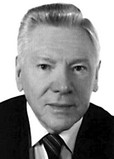Combined effects of hypoventilation and physical practices on muscular fatigue under submaximal exercise
Фотографии:
ˑ:
Dr.Biol., member-correspondent RAS, Professor N.A. Fudin1
PhD S.Y. Klassina1
PhD S.N. Pigareva1
Dr.Med., Professor Y.E. Vagin2
1P.K. Anokhin Research Institute of Normal Physiology, Moscow
2I.M. Sechenov First Moscow State Medical University, Moscow
Objective of the study was to analyze the combined effects of hypoventilation and high-intensive physical practices on the physical working capacity under submaximal exercise. Sampled for the study purposes were 18 male volunteers tested by cycle ergometer tests till refusal. The sample was split up into an Experimental (EG, n=12) and Reference (RG, n=6) Groups, with only the EG trained to master the modern hypoventilation techniques in combination with the high-intensity physical practices. The sample was subject to the pre- and post-experimental high-intensity cycle ergometer (160 W) tests to find the resting and post-work functionality test data including: ECG; pneumograms; and EMG for the right thigh quadriceps. The submaximal exercise and pre- and post-test breath-holding test rates were measured in the tests. The study data and analysis demonstrate that the hypoventilation combined with physical practices doubles the physical working capacity albeit this growth claims high physiological costs. The post-work tests showed an expressed trend for weakening of the right-thigh quadriceps associated with a moderate sagging of the alpha-moto-neurons discharge frequency. We believe that the effect may be due to the central inhibition mechanisms triggered by excessive fatigue in the tests. The hypoventilation breathing technique in combination with the high-intensity physical practices was tested to improve the hypoxic tolerance rates.
Keywords: sports, submaximal exercise, hypoventilation training combined with physical exercises, physical working capacity, functional state.
References
- Pryanishnikova O.A., Gorodnichev R.M., Gorodnicheva L.R. et al Sportivnaya elektroneyromiografiya [Sport electroneuromyography]. Teoriya i praktika fizicheskoy kultury, 2005, no. 9, pp. 6-11.
- Ryzhikov G.V., Klassina S.Ya. Prostranstvenno-vremennaya struktura «kvanta» proizvodstvennoy deyatelnosti kontrolera i ego fiziologicheskoe obespechenie [Space-time structure of "quantum" of controller's professional activity and its physiological support]. Fiziologiya cheloveka [Human physiology], 1984, vol. 10, no. 1, pp. 144-152.
- Fiziologiya myshechnoy deyatelnosti, truda i sporta. V serii: Rukovodstvo po fiziologii [Physiology of muscular activity, work and sport. In: Physiology guide []. Leningrad: Nauka publ., 1969, 585 p.
- Fudin N.A. Fiziologicheskaya tselesoobraznost proizvolnoy regulyatsii dykhaniya u sportsmenov [Physiological feasibility of voluntary regulation of breathing in athletes]. Teoriya i praktika fiz. kultury, 1983, no. 2, pp. 21-22.
- Fudin N.A., Sudakov K.V. [ed.] Gazovy gomeostazis (proizvolnoe formirovanie novogo stereotipa dykhaniya) [Gas homeostasis (voluntary formation of new breathing stereotype)]. Tula: Tula publ., 2004, 216 p.
- Fudin N.A., Klassina S.Y., Vagin Y.E. Gipoventilyatsionnoe dykhanie kak sredstvo povysheniya fizicheskoy rabotosposobnosti cheloveka pri fizicheskoy rabote do otkaza [Effects of hypoventilation breathing on physical working capacity during exercise to failure]. Teoriya i praktika fiz. kultury, 2016, no. 12, pp. 55-57.




 Журнал "THEORY AND PRACTICE
Журнал "THEORY AND PRACTICE